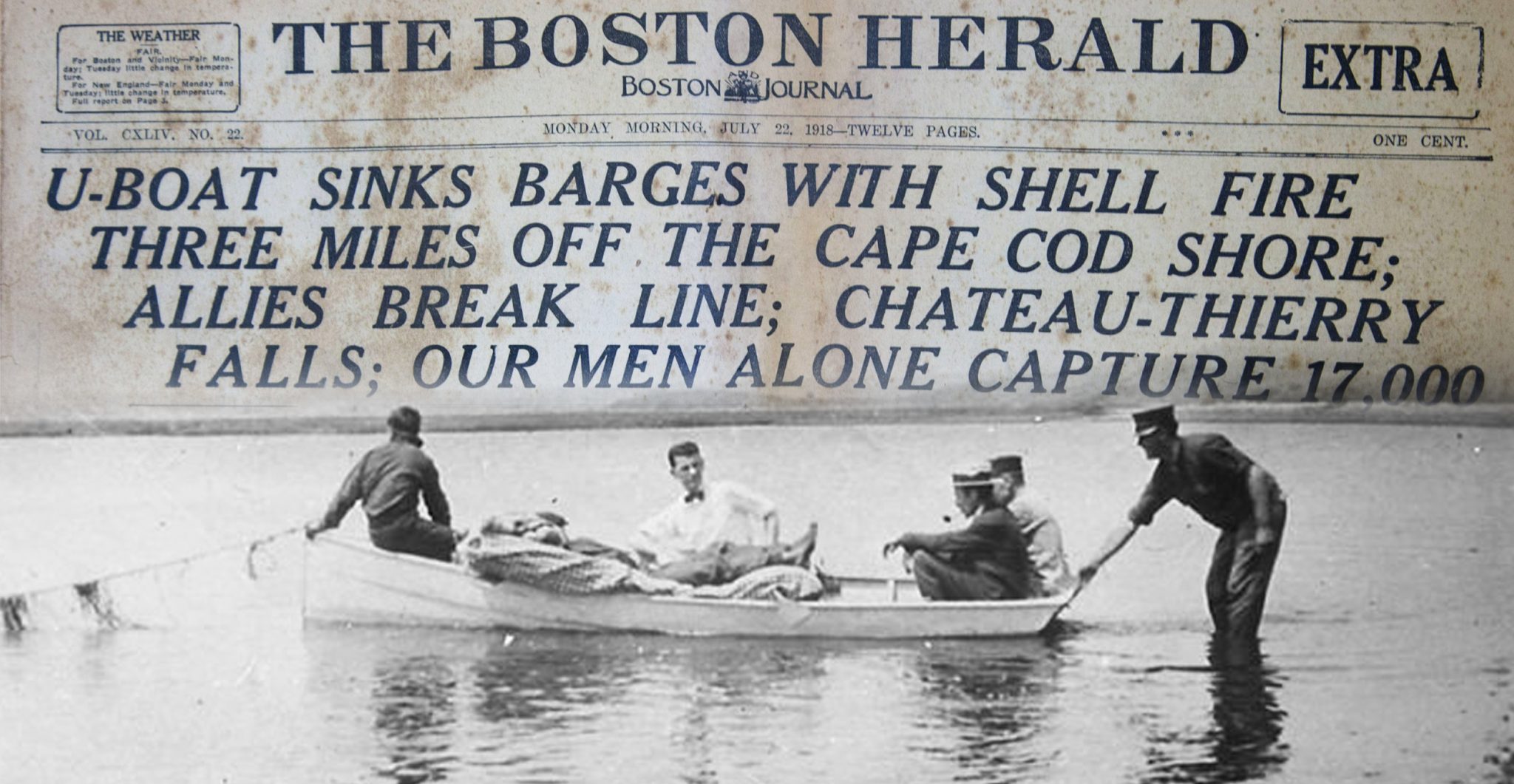In July of 1918, just four months before the end of World War I, Orleans, a small town off the coast of Cape Cod in Massachusetts, was attacked by a German U-boat submarine.
The U-156 was one of seven U-boats that were designed to cross the Atlantic all the way to the United States. It was commissioned by the Imperial German Navy U‑Kreuzer Flotilla in 1917 under Kapitänleutnant Konrad Gansser.
In 1918, she was under the command of Kapitänleutnant Richard Feldt. With a crew of seventy-seven men, the two hundred foot sub left Germany and passed through the North Sea on her way to New York Harbor to lay mines and cut the communication cable between France and the United States.
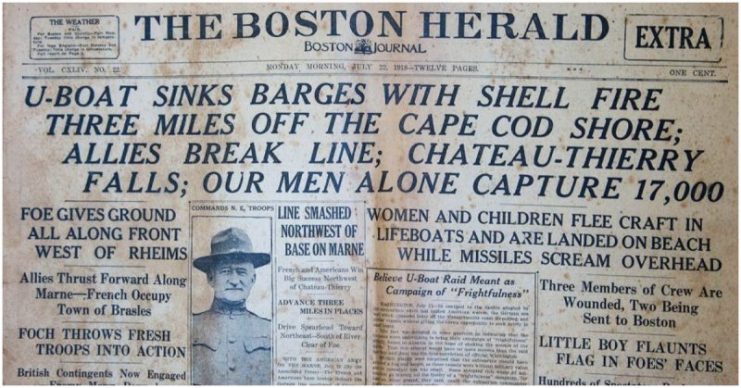
Along the way, they sank the Norwegian ship, Manx King. Off the coast of Orleans the tugboat Perth Amboy, commanded by Captain James P. Tapley, was taking four barges, the Lansford, Barges 766, 703, and 704, to Virginia. A nearby fishing boat saw the U-156’s torpedo fly past the tug and explode on shore.
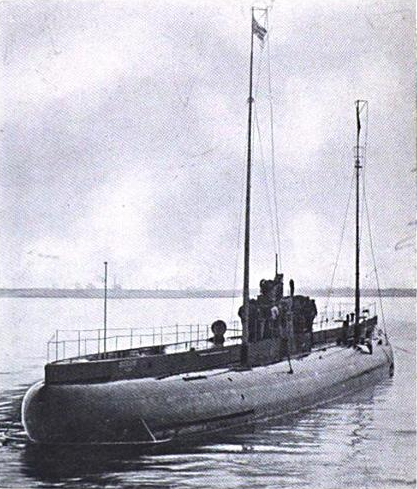
Two more torpedoes went by on the same course. The next shot hit the Amboy Perth and exploded the pilothouse, leaving the tug on fire. The helmsman of the tug, John Bogovich, was trapped under the debris but was able to be removed.
His right arm was almost severed with several gashes, and his left shoulder was bleeding. One by one, each barge was attacked and sunk but the captains had ordered abandon ship, and no lives were lost in the attack.
![The iron ship ‘Manx King’, 1751 tons, in an unidentified port [iron ship, 1751 tons, ON86135. 251.0 x 39.0 x 24.1. Built 1884 (10) Richardson, Duck and Co., Stockton. Owners: GS Karran, registered Castletown, Isle of Man to Norway without change of name c.1912]. The ‘Manx King’ was stopped and scuttled by the U-156 on 8 July 1918, when it was traveling between New York and Rio de Janeiro. The captain Rasmus Emil Halvorsen and crew were rescued from the lifeboats after 27 hours by DS ‘Anchites’](https://www.warhistoryonline.com/wp-content/uploads/sites/64/2018/07/prg-1373-24-52-741x541.jpeg)
Whether or not he got off any shots is unknown, but in the lifeboat on the way to shore, he proudly waved the flag for all to see.
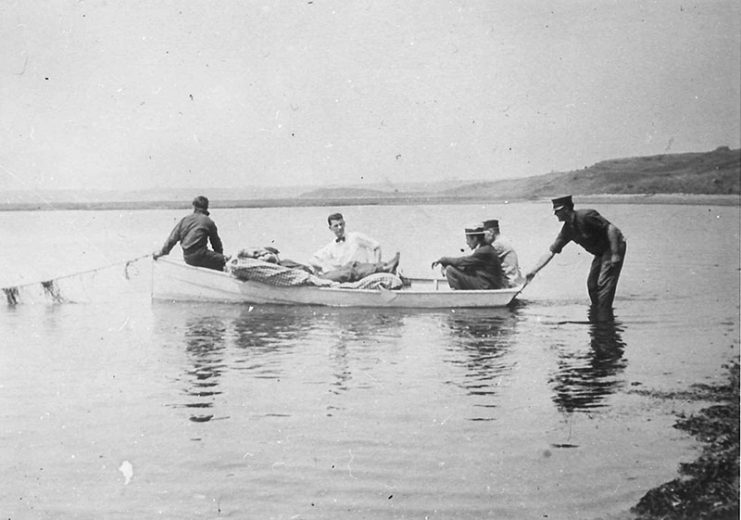
Nearby Chatham Naval Air Station had been alerted but there were very few men at the station due to a missing blimp, and many had gone to Provincetown for a baseball game. The highest ranking officer at the base was Lieutenant Junior Grade Elijah Williams who was able to put a flight crew together to fly an R-9 seaplane to the site of the one-sided battle.
Ensign Eric Lingard, Chief Special Mechanic Edward Howard, and Ensign Edward Sheilds approached the sub and called for the release of the bomb the plane was carrying.
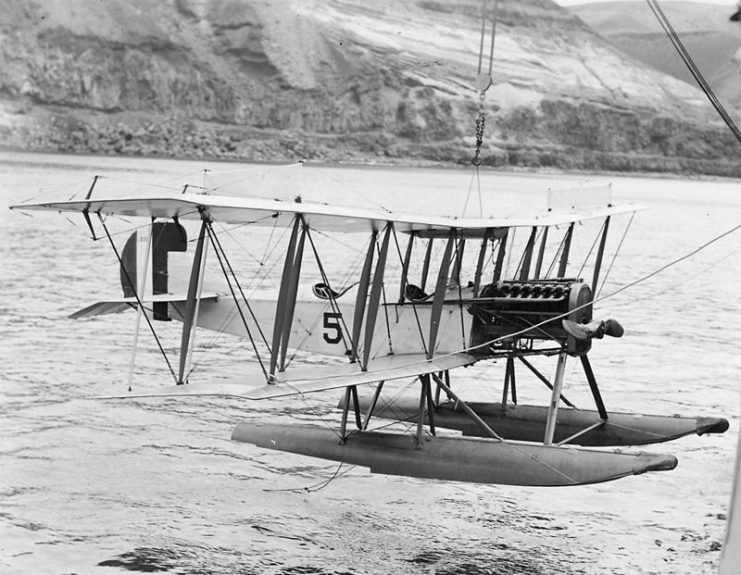
The bomb did not release, causing Howard to go out on the wing to release the bomb manually but when it fell it did not go off. The sub took a shot at the plane and dived.
Another plane piloted by Captain Charles Eaton flew to the sub and dropped its payload. Again, the bomb failed to explode. Eaton was so frustrated he threw a wrench at the sub and then the entire contents of his toolbox. Feldt, probably not wanting to press his luck, took the submarine down and left the area.
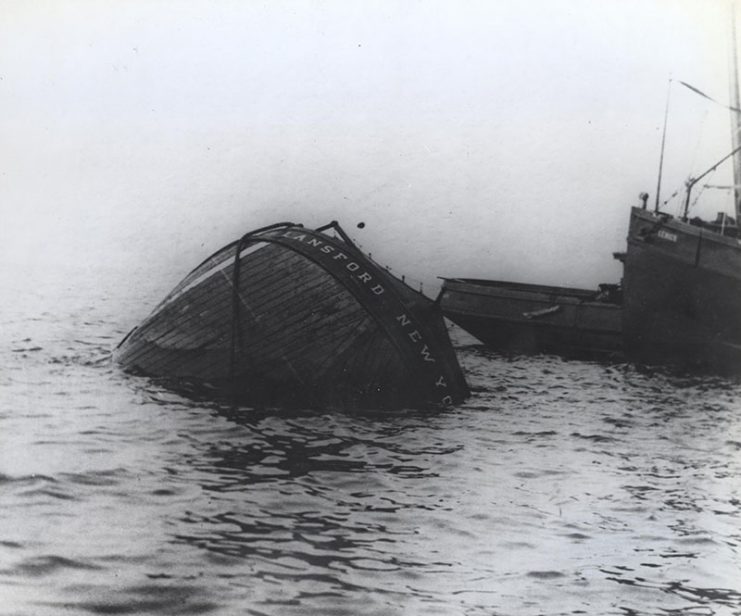
After the ninety minute battle the United States government took steps to secure the coastline. The Perth Amboy was retrieved and refurbished. She was renamed the Nancy Moran and continued service until she was sent to England to participate in the evacuation of Dunkirk in World War II. In 1946, she sank in the English Channel after a collision with a tanker.
Read more stories like this – The Last U-Boat Commander Passes Away at 105
The U-156 went on to either sink or damage over twenty more ships during the months of August and September but after approaching the Northern Passage on her way home she was never heard from again. It is believed that she struck a mine and exploded with seventy-seven casualties. The communication line was never cut.
